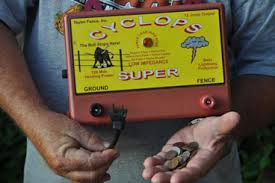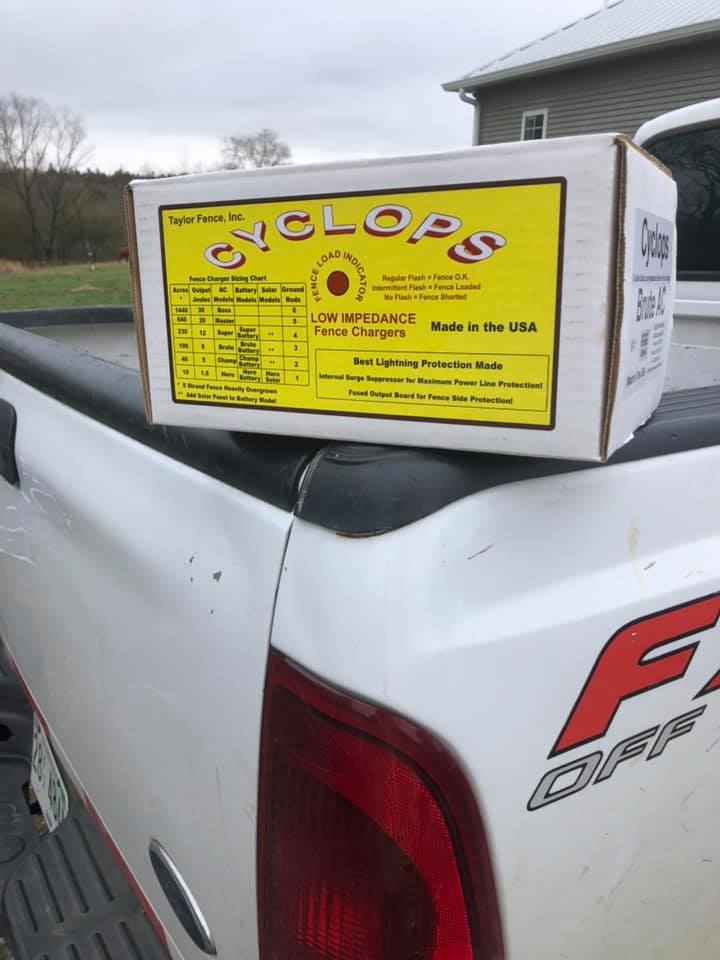All Cyclops Fence models output a wide pulse which puts the hurt in the pulse which gets and keeps the respect of the animals. Don’t be fooled by mileage ratings which are just an approximation of power but go by the electric joule power rating.
17 Mistakes To Avoid With Electric Fencing
By Wayne Burleson email: rutbuster1@mcn.net
With 30 years of experience building hundreds of miles of smooth-wire electric fence, I’ve seen just about every fencing mistake possible. And I continue to see folks make many of the same common mistakes. I still make mistakes myself, because I’m constantly challenging myself to make fencing easier, faster, stronger, and safer.
High-tensile, smooth wire, electric fencing is the fastest and most affordable fence that I know about, and its technology has drastically improved over the past 10 years. But many folks are hesitant to use it because they remember old failures — wires breaking, chargers starting fires, wet vegetation shorting out the fence and other troubles.
With a little commitment and a modest investment in time to learn how to use this new technology, you can save thousands of dollars and hours of maintenance time by making electric fencing work for you. So you won’t have to learn the hard way, here are 17 common mistakes that you should avoid:
Poor earth grounding. Lots of folks (including me) still think you can skimp when it comes to adequate earth grounding. What we must all learn to do, is install several ground rods — at least three that are 6 to 8 feet long, galvanized, and attached with good ground clamps. The electricity must complete a full circle back to the charger through the ground. Poor grounding gives weak shocks.
Using different types of metals. Don’t do it. When you hook up steel wire to copper something call electrolysis happens and the metal becomes corroded, making a poor contact and weakening shocking power.
Inadequate animal training. Each and every animal must learn that the fence hurts. So please build a handy training fence, preferably on heavy wet soil. Flag the fence for visibility, and force the animal to try and cross the fence.
Fence posts too close together. Well-intended government agencies recommend lots of fenceposts in their fencing specifications. Fifty-foot spacing on flat land is just too close. You want the fence to act like a rubber band. When something runs into the wire, you don’t want to break all the insulators or knock posts out of the ground. If the posts are spread apart far enough — say 80 to 100 feet — the wire will just bend to the ground and pop back up.
Too many wire tie-offs. Again, fencing specifications may call for braces every quarter mile wire to tie the wire off. But I have found that even 5,000 feet is OK, and actually adds more elasticity in the fence wire. This reduces the chance of wires breaking.
Wires tied tight to each fencepost. To maintain elasticity (the rubber band effect), wires must float past each line fencepost.
Building new fences near old existing fences. Old fence wires seem to be always moving somewhere and coming in contact with the new electrified wires. This almost always causes a complete short in the fence, and away the animals go.
Bottom wire in contact with heavy, wet vegetation. Wet grass will suck lots of juice out of any fence charger. Hook up the lower wires separate from the other wires, and install a switch for the lower wires that you can turn them off when the grass is tall.
Poor-quality insulators. Be careful here. Sunlight deteriorates plastic. So buy good-quality, long-lasting insulators. Usually black ones are treated to resist degradation by ultraviolet light. I have found that poor quality insulators turn white or clear after a few years in direct sunlight.
Staples driven in all the way. When using plastic tubing as an insulator, don’t staple it too tight. I once spent several hours trying to find a short in a gate. Finally, I discovered a staple had damaged the tubing next to a ground wire, causing a hidden short.
Solar panels not directly facing the sun. This seems almost too obvious to be a problem. But a solar panel won’t function at its potential if not properly installed. Please read the instructions. Don’t just guess if you have done it right.
Kinks in high-tensile wire. A small kink in stiff wire will always break. Also avoid hitting this kind of wire with a hammer, as this will easily damage the wire causing a break. Always cut out a damaged section of high tensile wire and splice it. Incidentally, I have found that a hand-tied square knot makes the strongest splice.
Installing in-line strainers close together. Wires will flip together once in awhile. If in-line strainers are installed one above the other, they will sometimes hook up. Separate in-line strainers by a fencepost and they will never catch on each other.
Wires too close to each other. Keep them at least 5 inch apart.
No voltmeter. Without a voltage meter to check how hot a fence is, you’re just guessing.
Wire too small. The larger the wire, the more electricity it will carry. Don’t skimp.
Inadequate charger. A wimpy fence charger gives you a wimpy fence. Don’t skimp here because animals will think a smooth wire fence is a joke without a strong bite, and they’ll walk right through it.
Your fence charger should be low-impedance, come from a dependable supplier, and have a warranty and replaceable components. Please buy one that puts out lots of power. During a rainy year, you may have lots of plant growth touching the wires. That’s when you will need extra power to shock through the heavy, wet vegetation. It’s also handy to find folks with an extra charger they can loan to you while yours is being repaired. Expect some breakdowns, especially from lightning. Certain fence suppliers offer lightning protection with their warranties.
Don’t be afraid to try electric smooth wire fencing. Find a good fence suppler and learn some of the tricks of the trade. I know folks who hate electric fencing. But their pocketbook is not big enough to build a conventional fence, which may cost up to $1 per foot.
The next time your bulls get in a fight with the neighbors bulls and tear down all the fence, remember that most animals will learn not to touch a wire with 5,000 volts running thorough it.

